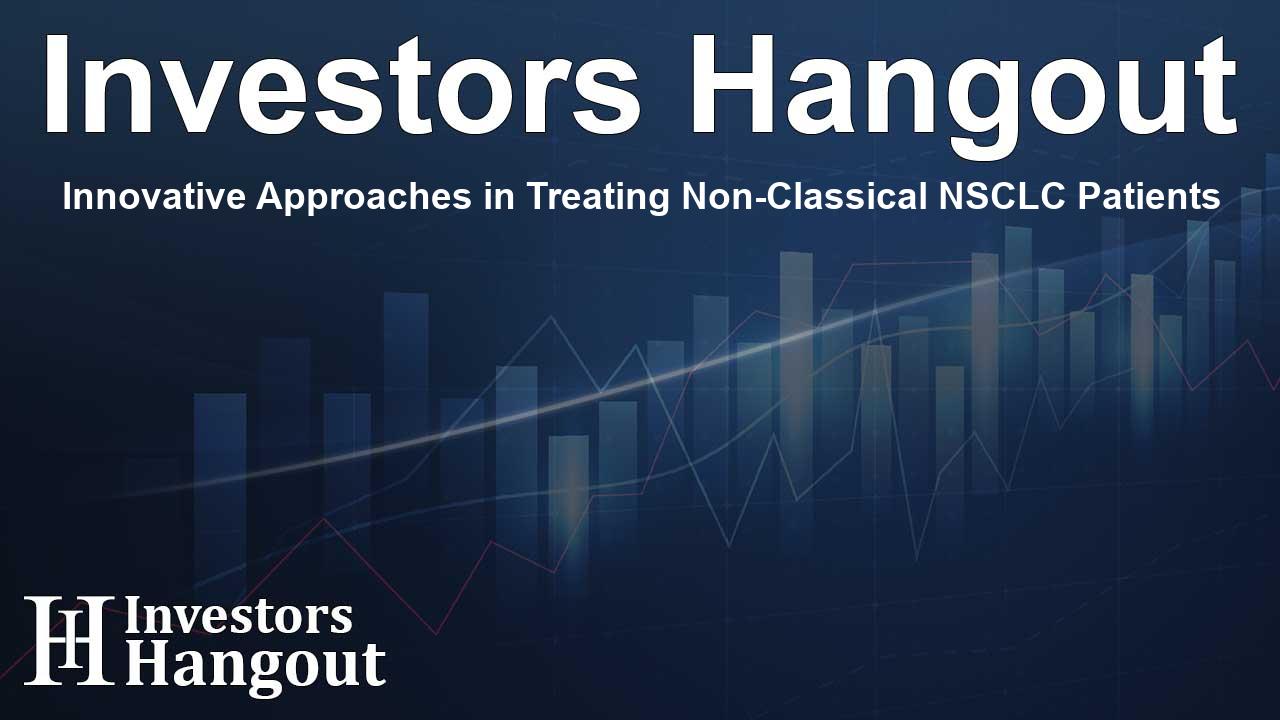Innovative Approaches in Treating Non-Classical NSCLC Patients

Understanding Non-Classical EGFR Mutations in Lung Cancer
The treatment landscape for non-small cell lung cancer (NSCLC) is changing rapidly, especially for patients with non-classical EGFR mutations. Recent data shared at a congress highlights the real-world treatment practices and outcomes for these patients, who have significant unmet medical needs.
Real-World Insights from Guardant Health Data
An analysis of 3,276 recently diagnosed cases of EGFR-mutant NSCLC from Guardant Health's extensive clinical-genomic database reveals key treatment patterns. This study uncovered a variety of non-classical mutations, including major alterations like P-loop and ?C-helix compressing mutations. It’s evident from these findings that treatment approaches are quite diverse. Just 36% of patients received targeted therapies such as osimertinib or afatinib, while a striking 60% went through chemotherapy and/or immunotherapy.
Challenges for Patients with Non-Classical Mutations
Dr. John Heymach, M.D., Ph.D., highlighted the urgent need for better treatment options for newly diagnosed NSCLC patients with these non-classical mutations. Clinical outcomes indicate that current therapies, particularly EGFR TKIs, are not delivering significant benefits. Meanwhile, traditional chemotherapy can be highly toxic and burdensome in terms of treatment schedules.
Insightful Data on Treatment Discontinuation
The statistical analysis revealed that patients with non-classical mutations experience much shorter treatment durations. Those receiving osimertinib stopped treatment after a median of just 6 months, compared to their peers with classical mutations, who continued for an average of 13.8 months. Furthermore, patients on afatinib discontinued therapy after a median of 8 months, and those undergoing chemotherapy dropped out even sooner, at around 4.2 months.
BDTX-1535: A Hopeful Solution for Patients
In light of these challenges, Black Diamond Therapeutics is advancing BDTX-1535, a fourth-generation EGFR TKI specifically crafted to target a wide range of mutations in EGFR, including non-classical ones. Elizabeth Buck, Ph.D., the Chief Scientific Officer of the company, stated that BDTX-1535 is designed to meet the urgent needs of this underserved group of patients.
Future Directions and Upcoming Clinical Trials
The findings add to the foundational work presented at recent cancer research meetings, where over 100 non-classical mutations were identified in a significant number of newly diagnosed NSCLC patients. Looking ahead, Black Diamond Therapeutics is set to release preliminary Phase 2 data concerning patients with non-classical mutations in the first-line setting early next year, with more results expected soon for those undergoing second and third lines of therapy.
About Black Diamond Therapeutics
Black Diamond Therapeutics is a leading oncology company dedicated to creating MasterKey therapies that efficiently target families of oncogenic mutations found in cancer patients. Their goal is to develop therapies that are not only effective but also minimize the toxicity risks associated with traditional treatments. With initiatives like BDTX-1535, which aims to cross the blood-brain barrier, the company seeks to revolutionize the treatment landscape for NSCLC and brain tumors.
Frequently Asked Questions
What are non-classical EGFR mutations?
Non-classical EGFR mutations are variations that are different from the typical changes usually targeted by existing therapies. They can influence treatment choices and prognosis significantly.
Why is it tough to treat patients with non-classical mutations?
Current therapies, such as EGFR TKIs like osimertinib and afatinib, often provide limited benefits. They can lead to early treatment discontinuation due to ineffectiveness or adverse side effects.
What exactly is BDTX-1535?
BDTX-1535 is a fourth-generation EGFR TKI created by Black Diamond Therapeutics, targeting a wide range of EGFR mutations, including those considered non-classical.
How is BDTX-1535 different from other treatments?
BDTX-1535 aims to address some limitations seen in current therapies by effectively targeting non-classical mutations while reducing the likelihood of toxicity.
When can we expect results from the upcoming clinical trials?
We expect initial Phase 2 data from trials focusing on first-line treatments for patients with non-classical mutations to be shared early next year. Additional results regarding second and third-line treatment contexts are also anticipated soon.
About The Author
Contact Logan Wright privately here. Or send an email with ATTN: Logan Wright as the subject to contact@investorshangout.com.
About Investors Hangout
Investors Hangout is a leading online stock forum for financial discussion and learning, offering a wide range of free tools and resources. It draws in traders of all levels, who exchange market knowledge, investigate trading tactics, and keep an eye on industry developments in real time. Featuring financial articles, stock message boards, quotes, charts, company profiles, and live news updates. Through cooperative learning and a wealth of informational resources, it helps users from novices creating their first portfolios to experts honing their techniques. Join Investors Hangout today: https://investorshangout.com/
The content of this article is based on factual, publicly available information and does not represent legal, financial, or investment advice. Investors Hangout does not offer financial advice, and the author is not a licensed financial advisor. Consult a qualified advisor before making any financial or investment decisions based on this article. This article should not be considered advice to purchase, sell, or hold any securities or other investments. If any of the material provided here is inaccurate, please contact us for corrections.
